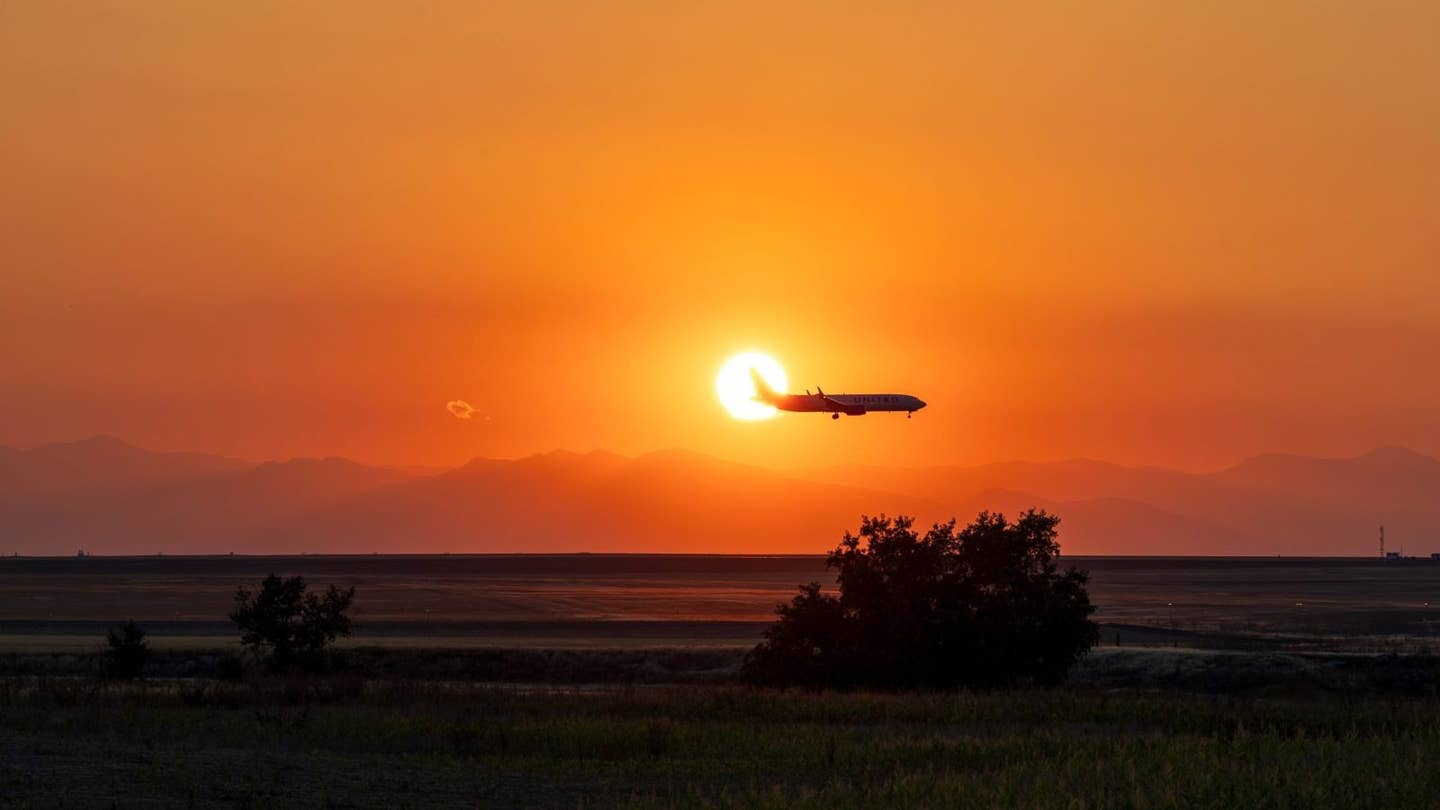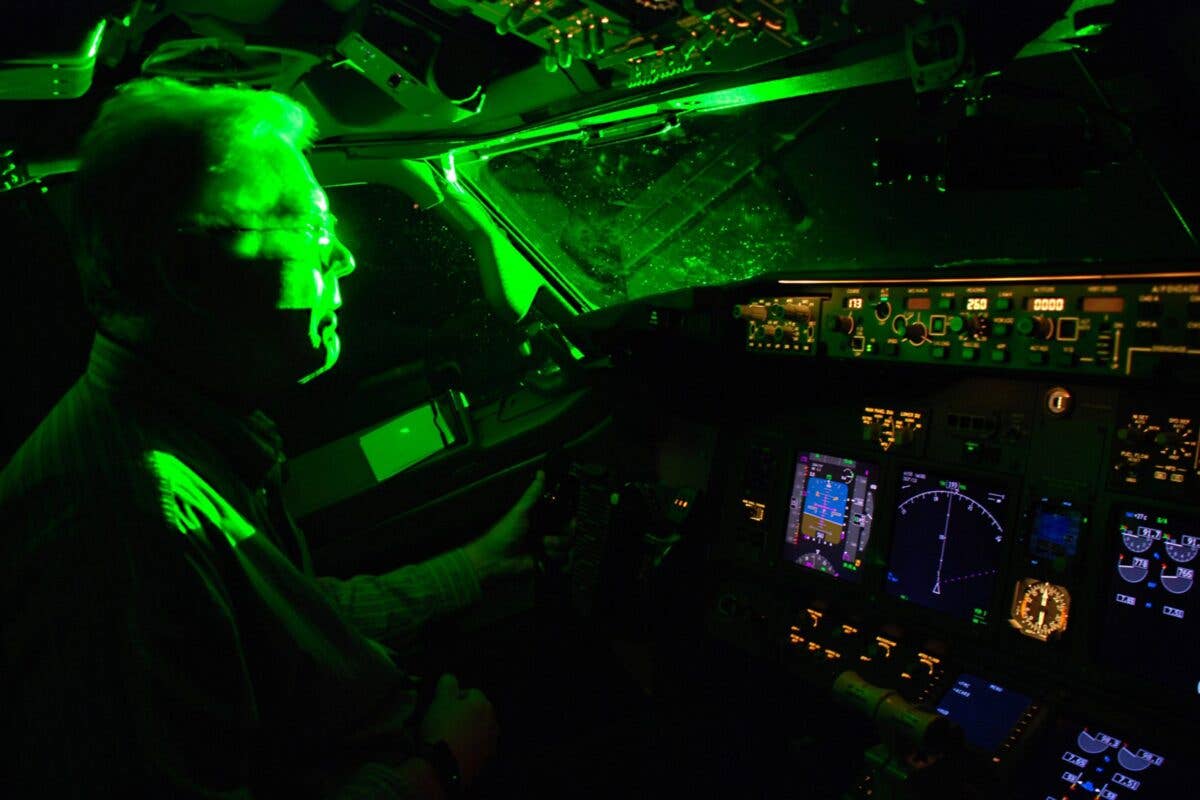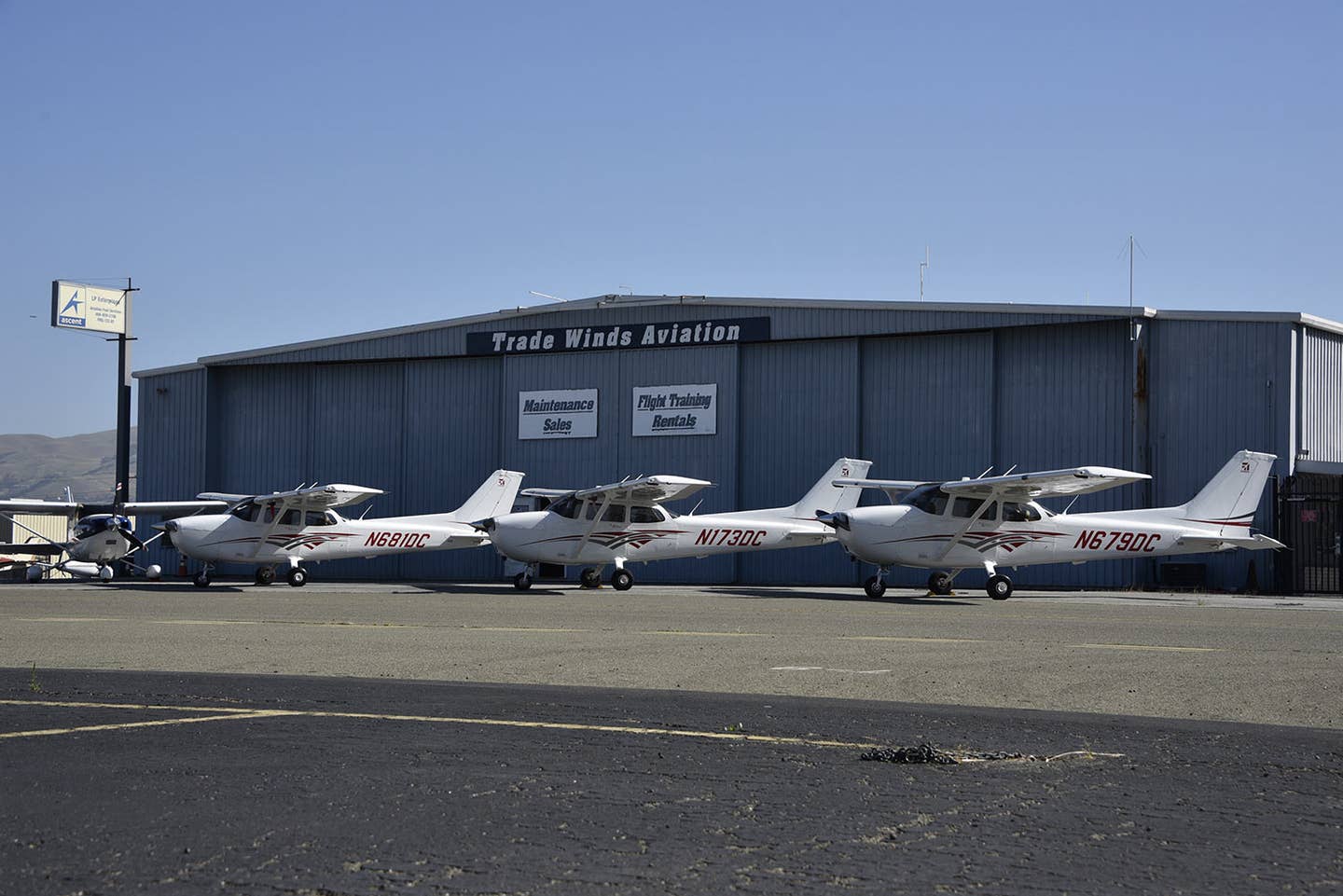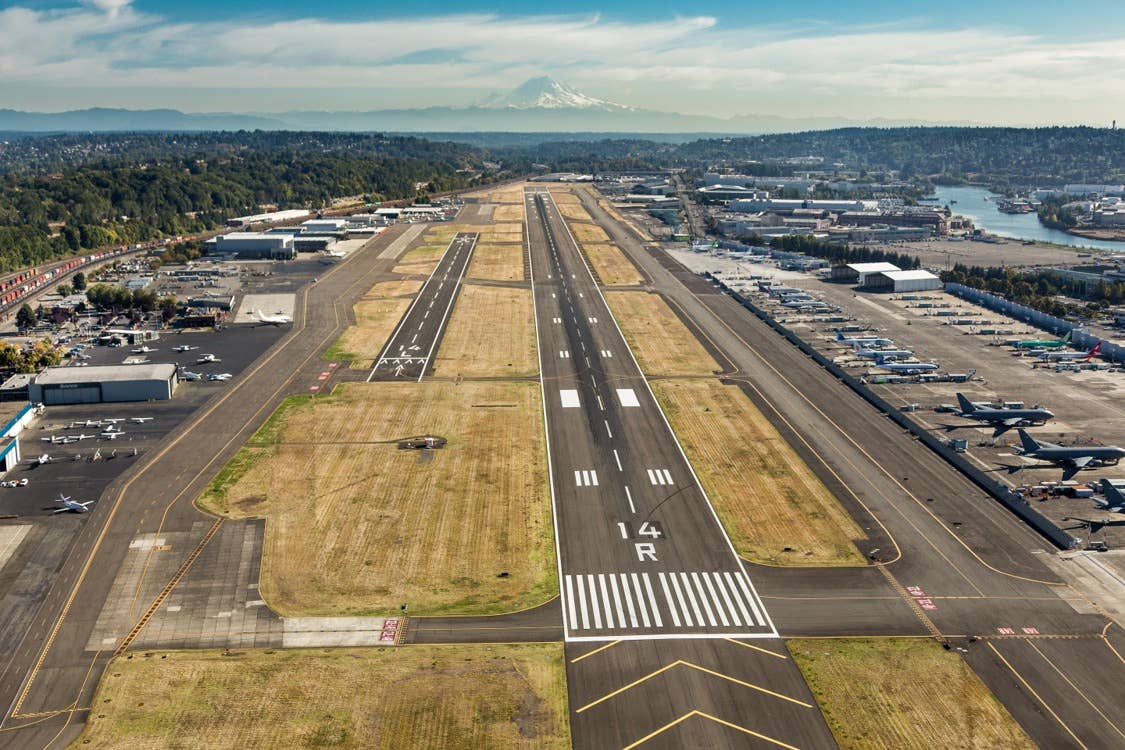Greeley’s Ambitious Plan to Become Colorado’s Third Major Airport
City officials envision transforming the rural airport into a thriving commercial Part 139 facility and corporate aviation center.

A Boeing 737 on approach. [Credit: Shutterstock]
The city of Greeley is setting its sights on transforming the Greeley-Weld County Airport (KGXY) into a commercial facility in a bold move that could reshape air travel in northern Colorado.
With plans to pursue Part 139 certification from the FAA, city officials are laying the groundwork for scheduled passenger service and increased corporate activity. This ambitious vision aims to position Greeley as a key gateway to the Front Range.
AirlineGeeks had the opportunity to interview Paul Trombino, the current director of public works for the city of Greeley, to help understand his vision and the city’s ambitions for the airport. Trombino assumed the role of director in June 2021 and has now added the airport to his list of areas where the city has significant growth potential.
Greeley-Weld County Airport
Greeley-Weld County Airport was built in 1944 as a small regional airport. In the late 1940s, it saw small commercial service operations, with Challenger Airlines serving Greeley as a stop between Billings, Montana (KBIL), and Denver along with Salt Lake City (KSLC) and Denver. Ultimately, service ended, and the airport has since become a general aviation airport with around 120,000 operations annually.
In 1996, the airport underwent its most comprehensive expansion since opening in partnership with the FAA. It constructed a new 10,000-foot runway and taxiway system, along with a terminal, administration building, and landside infrastructure improvements to improve accessibility to the airport. Trombino highlighted how this significant investment was a sign of a strong “growth plan since 1996” and added how “[the city] has always seen potential in the airport” with the foundation already being set.
The airport is uniquely positioned because it already has a 10,000-foot runway. According to GlobalAir.com, the only public airports in Colorado with 10,000-foot plus runways are Colorado Springs (KCOS), Centennial (KAPA), Denver, Grand Junction (KGJT), Greeley, Hayden (KHDN), Montrose (KMTJ), and Pueblo (KPUB).
But what sets Greeley apart from this short list of airports?
Other than Centennial, which serves as a reliever airport for Denver International (KDEN), all other airports already see commercial service, making Greeley an attractive airport for future service additions. In fact, according to the FAA’s National Plan of Integrated Airport Systems, Greeley is currently the only public airport with a 10,000-foot runway in Colorado that is classified as a GA facility.
Development Plans
As mentioned, Greeley has a unique 10,000-foot runway, but what else can the airport offer for the Front Range? For one, the airport is already profitable as a GA airport serving the community.
“Rural airports typically operate in the red, but Greeley is in the black, which is unique,” Trombino said.
The airport is projecting significant growth in the next 10 and 20 years, with revenue jumping from $125 million in 2023 to $360 million by 2033 and nearly $700 million by 2043.
Trombino is adamant that he “wants the current businesses to [stay] successful,” as bringing more operations to the airport “will bring more customers, from maintenance to fuel,” even with the city’s growth plans.
Its operational outlook aligns with this vision, with projections showing growth from 120,000 operations in 2023 to 300,000 by 2033 and 600,000 by 2043.
Another major player spurring this growth is JBS USA Foods, a major meat processing company headquartered in Greeley. The company currently operates its corporate jets out of Fort Collins but is looking to move to Greeley.
JBS is looking to move to Greeley by March 2026 and needs a new hangar and taxiway built for its needs. It also needs the runway to be developed to increase weight limits from the current 45,000 pounds to a minimum of 65,000 pounds, or even 100,000 pounds. Trombino sees this opportunity as “phenomenal for setting us up for success” and believes it will be an excellent platform for the city to present to the FAA as a necessity for an increase in runway weight.
Trombino stated that the FAA “envisions Greeley as one of the main airports in Colorado, alongside Denver and Colorado Springs.”
Furthermore, the airport does not face the same constraints as similar regional airports. Many airports near the Denver metro area suffer from environmental, capacity, and space limitations, but Trombino believes that Greeley’s location is insulated from such issues.
“[The city views] the space in and around the airport [like] a blank canvas,” he said. “The other airports don’t have the length that we do, and more importantly, they all have housing around them, which causes constraints that we don’t face.”
When specifically asked about similar competitor airports like Northern Colorado Regional (KFNL) in Loveland and Rocky Mountain Metropolitan (KBJC) in Broomfield, Trombino said that they “have capacity challenges,” and don’t necessarily have the “capacity to expand.”
The city also believes there is no better time than now to invest heavily in the airport.
“If the airport doesn’t follow the growth of the city, it will become an economic drag, as we think about the city in the future, including transportation,” Trombinso said.
With the recent announcement that the American Hockey League's Colorado Eagles are moving to Greeley from Loveland and the University of Northern Colorado is building its Osteopathic Medical School in downtown Greeley, Trombino believes that “all of the things are starting to align for businesses and residents for further growth and jobs.”
With the Greeley-Weld County Airport directly sitting within the Colorado Enterprise Zone, it provides tax advantages for new businesses to invest in and around the airport. The city recently presented its Strategic Airport Business Plan to the FAA, highlighting how the airport can also develop an agriport and railport to connect. A major highlight is that the city “has the ability to create a spur off the main [Union Pacific Railroad] line,” which, in Trombino’s view, will open the airport and the surrounding area for further freight operations.
Future Airport Vision
It’s clear that the city has a strong vision for the airport, but building it up and making it commercially successful requires more than solid infrastructure. This includes interest from operators in utilizing the airport, alongside facing issues such as not being equipped with an air traffic control tower.
Trombino believes that there are multiple ways for Greeley to tackle this.
The 233rd Space Group is located right next to the airport and already utilizes some areas of the field. Trombino believes that if the city “made improvements, [the airport] could be a great training space for the Air Force National Guard.”
The city is exploring the option of taking advantage of its partnership with Aims Community College. Trombino views Aims as “such a good partner” and potentially “building an ATC tower in partnership with Aims” to allow training to occur at the airport, too.
Other ideas have also been proposed, including utilizing a remote tower system, which would be cheaper for the airport in capital and labor costs.
“I’m not afraid of having Greeley at the forefront of technology," he said. "It’s a matter of where we are and where the industry is heading, [so] we haven’t built a new airport in the country since 1995.”
The logical next step is to understand the market dynamics of the surrounding area and how to convince airlines and passengers to select Greeley over Denver and Cheyenne, both of which are an hour away from the city, with all of the developmental plans starting to take place.
Trombino says the city wants to start conversing with carriers like JSX and others “by the end of the year.” His reasoning stems from reduced security costs and a proven model at Rocky Mountain.
Airlines such as JSX “will be important” and “could be competitive” at an airport like Greeley.
He compared the airport to existing models like Chicago-Midway or Orange County, allowing people to get in and out of the busier metro more efficiently than the bigger, more congested airports nearby.
The city “thinks that this needs to be a high-end airport,” with Trombino personally believing that Greeley could “become a primary ancillary airport” in the Front Range.
“The airlines have to know who we are and that we are coming,” Trombino said. “I think we will be the new place to be, and the people in the northern Front Range will be surprised.”
Editor’s Note: This article first appeared on AirlineGeeks.com.

Sign-up for newsletters & special offers!
Get the latest FLYING stories & special offers delivered directly to your inbox






